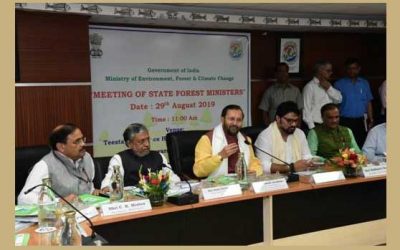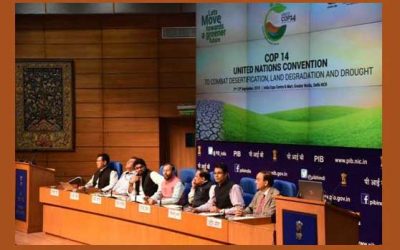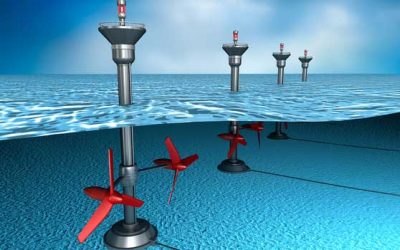Enterprise software major Salesforce announced today that it is acquiring workplace chatting app Slack in a massive $27.7 billion cash and stock deal. As part of the agreement, Slack shareholders will receive $26.79 in cash and 0.0776 shares of Salesforce common stock against each Slack share. Salesforce is buying Slack to meet the new digital transformation demands of enterprises.
For unversed, Slack is the workplace collaboration software used by organizations as an email alternative. By far, this acquisition is the largest in Salesforce’s two-decades-long history, exceeding its Tableau software purchase, which was estimated at $15.7 billion. Once the transaction is complete, Slack will become an operational unit of Salesforce and continue to be run by the CEO Stewart Butterfield, popularly known as Flickr co-founder.
As Covid-19 cases surge, businesses are re-architecting how they are working and communicating with customers, users, and employees. For organizations, collaborative tools and solutions have become essential in ensuring business continuity and providing an exceptional experience for a growing distributed workforce. That’s what sparked Salesforce’s attention for Slack. (See: How is digital transformation shaping the new future?)
For Salesforce, the most exciting aspect of the purchase is to link its Customer 360 tool with Slack Connect. Salesforce Customer 360 tool enables businesses to connect Salesforce apps and create a unified customer ID to get a complete overview of the customer.
Slack currently has over 70,000 paying customers that are using Slack Connect.
Transformative approach
Slack was first designed for internal office communication. It then became one of the most popular messaging and collaborative tools for virtual meetings, focusing on making it easy for employees to get essential information at a glance. Today, it offers easy instant messaging, rapid file sharing, and integrations with many top-notch services.
Slack’s technology engine allows developers to add the Slack API to their existing ecosystem or merge with various other tools through integration. The most significant advantage Slack boasts about today is its ability to integrate more than 2,400 diverse apps that people use to work together and connect.
With the acquisition, through its cloud-based platform, Salesforce aims to create and provide workspace apps to connect customers in a whole new way. The CRM major is hugely optimistic that the amalgamation will create the broadest open ecosystem of apps and workflows for organizations and allow millions of developers to develop the next generation of apps, using clicks instead of code.
Marc Benioff, Chief Executive Officer of Salesforce, seems to be so thrilled about the deal that he has declared the acquisition as a match made in paradise. “This is a match made in heaven. Together, Salesforce and Slack will shape enterprise software’s future and transform how everyone works in the all-digital, work-from-anywhere world. I’m thrilled to welcome Slack to the Salesforce Ohana once the transaction closes,” Benioff said in a press release.
Face to face with Microsoft
In 2021, cloud technology will continue to play a pivotal role in driving business for most organizations. The focus will be on integrating new technologies and analytics to link people and data across systems, applications, and devices. Salesforce is preparing to address these needs faced by commercial enterprises in today’s digital universe and maintain pace with its rival Microsoft. (See: Technology trends for businesses in 2020)
Slack’s buyout is an effort by Salesforce to beef-up the communication apps ecosystem. The purchase of Slack Technologies will enable Salesforce to compete head-to-head with Microsoft Teams, the industry leader in the enterprise communication space, and Cisco Webex.
Over the past few years, Microsoft Teams has achieved several new improvements and achieved substantial growth, primarily since it integrates well with the MS Office 365 subscription productivity package with the Azure Cloud. (See: Online project management tools: Top office suite analysis)
Even in the CRM software space, where Salesforce’s Sales Cloud has been leading for a long time, Microsoft is making rapid progress. Microsoft’s Dynamics platform appears like a serious threat to the supremacy of Salesforce. Businesses that are already running plenty of Microsoft tools mostly prefer the Dynamics platform because of their quick integration.
Salesforce seems to have also sensed the urgency to expand its horizons into the collaboration software space, which has become lucrative amidst the COVID-19 turmoil. The Slack buy will also help Salesforce take a quantum leap in meeting its customers’ new transformation needs.
“As software plays a more and more critical role in the performance of every organization, we share a vision of reduced complexity, increased power and flexibility, and ultimately a greater degree of alignment and organizational agility. I believe this is the most strategic combination in the history of software, and I can’t wait to get going,” says Stewart Butterfield, Slack CEO and Cofounder, in a statement.
The Slack buy came after Salesforce had put a lot of effort into creating its enterprise collaboration tool, Chatter, in 2009, and very recently, Salesforce Anywhere with limited success.











0 Comments